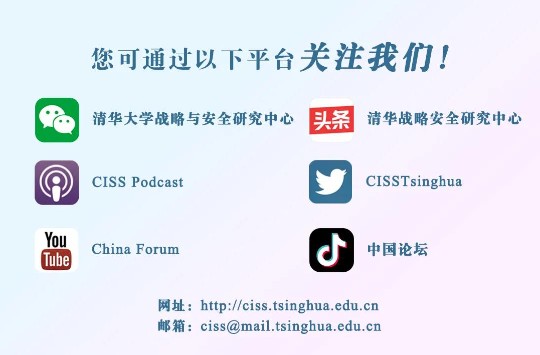一、特朗普关税政策背后的多重动因:贸易逆差、政治周期与产业保护 1. 在特朗普政府延续任期的背景下,对华再度加税不仅是其“美国优先”战略的延伸体现,更反映出其政策周期内强化国内产业保护、回应结构性经济焦虑的政治意图。面对美国国内对制造业空心化、就业流失、贸易逆差等问题的长期不满,特朗普政府将中国视为“经济威胁”的核心对象,试图借高关税制造“施压-回流”的外部激励机制,以稳固传统制造业州选民的政治支持。 (Apr 30, 2025, “Trump touts economy at Michigan 100-day rally, as Americans grow wary”, Reuters) The president, who said the tariffs were designed to boost domestic manufacturing, used aggressive rhetoric to describe a global trade system that the United States helped to build after World War II, saying “our country has been looted, pillaged, raped and plundered” by other nations. (Apr 3, 2025, “Trump announces sweeping new tariffs to promote US manufacturing, risking inflation and trade wars”, AP News) 2. 同时,关税也被视为服务于美国国家产业战略的多功能工具,体现出美国政府对中国产业崛起的系统性回应。当前,中国在电动车、绿色能源、人工智能等高技术领域的快速增长,被美方视为对自身经济安全和技术优势的潜在挑战。特朗普政府试图通过关税压制中国在全球中高端产业链的市场份额,迫使美国企业回流、加快本土替代,借此提高美国在全球制造业中的“再定位”能力。 (Apr 30, 2025, “Rivian Stockpiled EV Batteries From Asia Ahead of Trump Tariffs”, Bloomberg) U.S. President Donald Trump's rapidly changing trade policy and levies of at least 145% on China have forced many automakers, including Stellantis (STLAM.MI), General Motors (GM.N) and Volvo Cars (VOLCARb.ST), to pull their forecasts and several others to warn of profit and revenue hits. (Apr 30, 2025, “EV maker Polestar pauses annual forecast amid tariff uncertainty”, Reuters) AWS relies heavily on high-end computing gear, much of it manufactured in China. While some semiconductor components were recently exempted from tariffs, other critical data center parts may still be affected. (Apr 30, 2025, “AWS preps staff for customer concerns over tariffs, data risks, and possible foreign cloud restrictions by Trump”, Business Insider) (May 27, 2025, “As the US-EU trade conflict escalates, Germany may face a cumulative loss of 250 billion euros”, China News) The US only buys about 5% of what Australian businesses sell overseas, but economists say the entire world, and especially trade-exposed nations like Australia, would lose from America raising its protectionist walls to the highest levels since 1909. The chief economist at KPMG, Brendan Rynne, estimates that the average tax rate on US imports is set to soar by more than 18 percentage points. In Rynne’s model, the world economy as a result would shrink by about 0.4%. And as a country that has depended on trade to drive prosperity, he estimates the new tariffs will deliver a $27bn blow to Australia’s economy, or as much as 1% of GDP. (Apr 30, 2025, “Trump’s tariffs could deliver a $27bn blow to Australia – and the cost of a global trade war would be far higher”, The Guardian) (Apr 11, 2025, “Impact of tariffs on developing countries could be 'catastrophic', says UN trade agency”, Reuters) The model suggests that other major US trading partners such as Canada and Mexico would also experience deep export declines of over 5% in both scenarios. Roughly 75% of Canada’s exports head south towards the US. Among the developing Asian economies, Nepal, Pakistan and the Philippines would experience substantial export declines. This is particularly the case in the second scenario, with losses ranging from 2% to 4.4%. These countries are particularly vulnerable to reciprocal tariffs because they rely heavily on exports and are deeply tied to global supply and production chains. (May 2, 2025, “How Trump’s tariffs could hit developing economies – even those not involved in the trade war”, The Conversation) 三、美国发起的贸易战火终将反噬自身,将对美国经济造成严重的负面影响。 1. 国际货币基金组织(IMF)发布的《世界经济展望报告》大幅下调2025年美国经济增长预期,较1月预测值低0.9个百分点,在发达经济体中下调幅度最大。 The U.S. economy will grow 1.8% this year, the IMF said in its latest World Economic Outlook, down 0.9% from January and a full percentage point from last year's projection of 2.8%. Growth for 2026 is expected to be slightly lower at 1.7%. (April 22, 2025, “IMF forecasts slower U.S. economic growth in 2025, pointing to escalating trade war” ,CBS News) 2.2025年一季度,美国GDP环比年化下降0.3%,创三年来最差季度表现,高盛更将增速预期下调至-0.8%。通胀率持续高企至4.2%,消费者年均承担关税成本超1300美元,沃尔玛、亚马逊等零售巨头被迫暂停对华加征关税,并标注“关税成本由美方承担”。与此同时,美国制造业PMI连续6个月低于荣枯线,企业破产数量同比激增37%,失业率回升至4.1%。 Gross domestic product, a sum of all the goods and services produced from January through March, fell at a 0.3% annualized pace, according to a Commerce Department report Wednesday adjusted for seasonal factors and inflation. This was the first quarter of negative growth since Q1 of 2022. (April 30, 2025,” U.S. economy shrank 0.3% in the first quarter as Trump policy uncertainty weighed on businesses”, CNBC) 3.贸易战极大打击美国普通消费者对美国经济和就业市场的信心。 Americans’ confidence in the economy slumped for the fifth straight month to the lowest level since the onset of the COVID-19 pandemic as anxiety over the impact of tariffs takes a heavy toll. The Conference Board said Tuesday that its consumer confidence index fell 7.9 points in April to 86, its lowest reading since May 2020. Nearly one-third of consumers expect hiring to slow in the coming months, nearly matching the level reached in April 2009, when the economy was mired in the Great Recession. A measure of Americans’ short-term expectations for their income, business conditions and the job market plunged 12.5 points to 54.4, the lowest level in more than 13 years. The reading is well below 80, which typically signals a recession ahead. (April 29, 2025, “As trade war stokes anxiety, consumer confidence plummets to COVID-era lows”, PBS News) 4. 美国一系列的关税政策使当地企业经营成本和消费成本上涨,供应链被干扰。关税战将导致贸易活动降温, 并拖垮美国本国经济。 (May 19, 2025, “In the Future, China Will Be Dominant. The U.S. Will Be Irrelevant”,The New York Times) 编辑:周杼樾 审核:中国论坛

